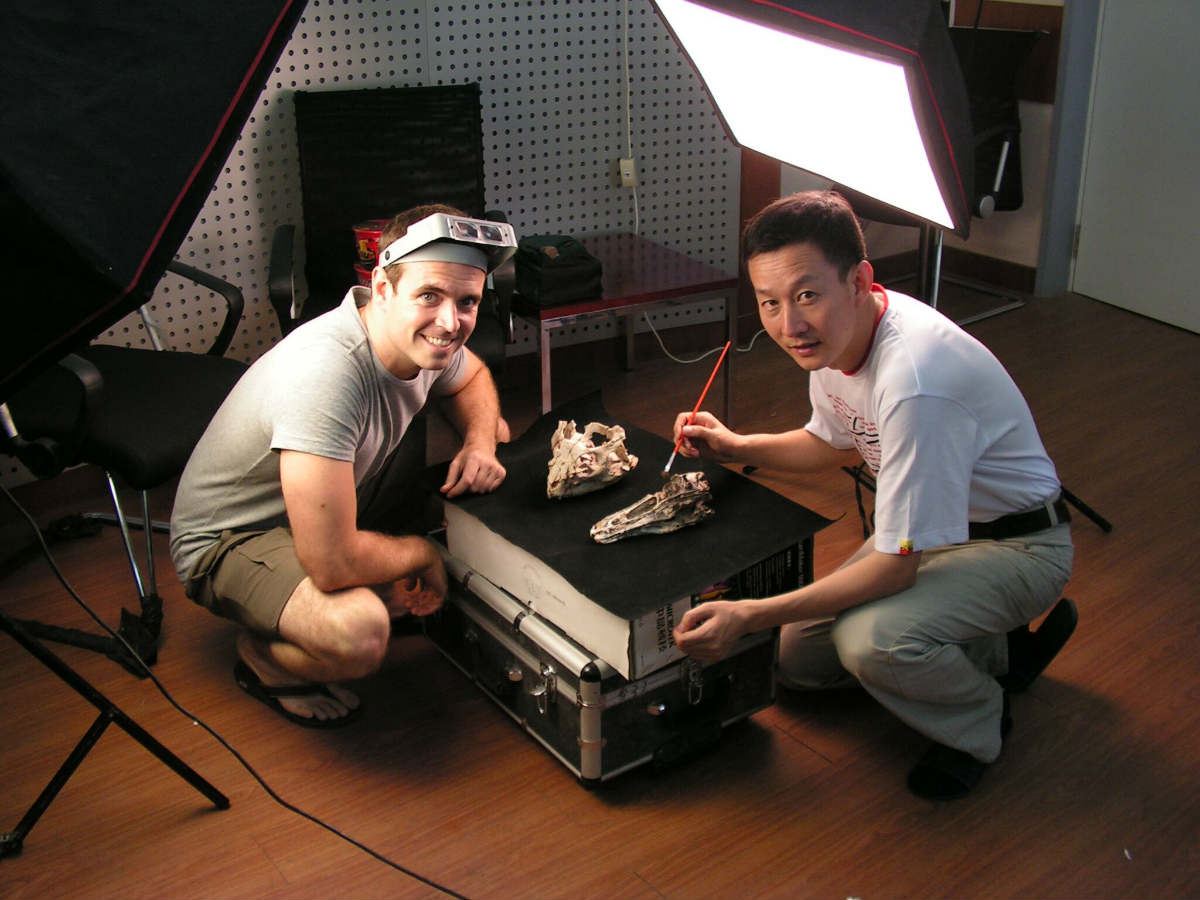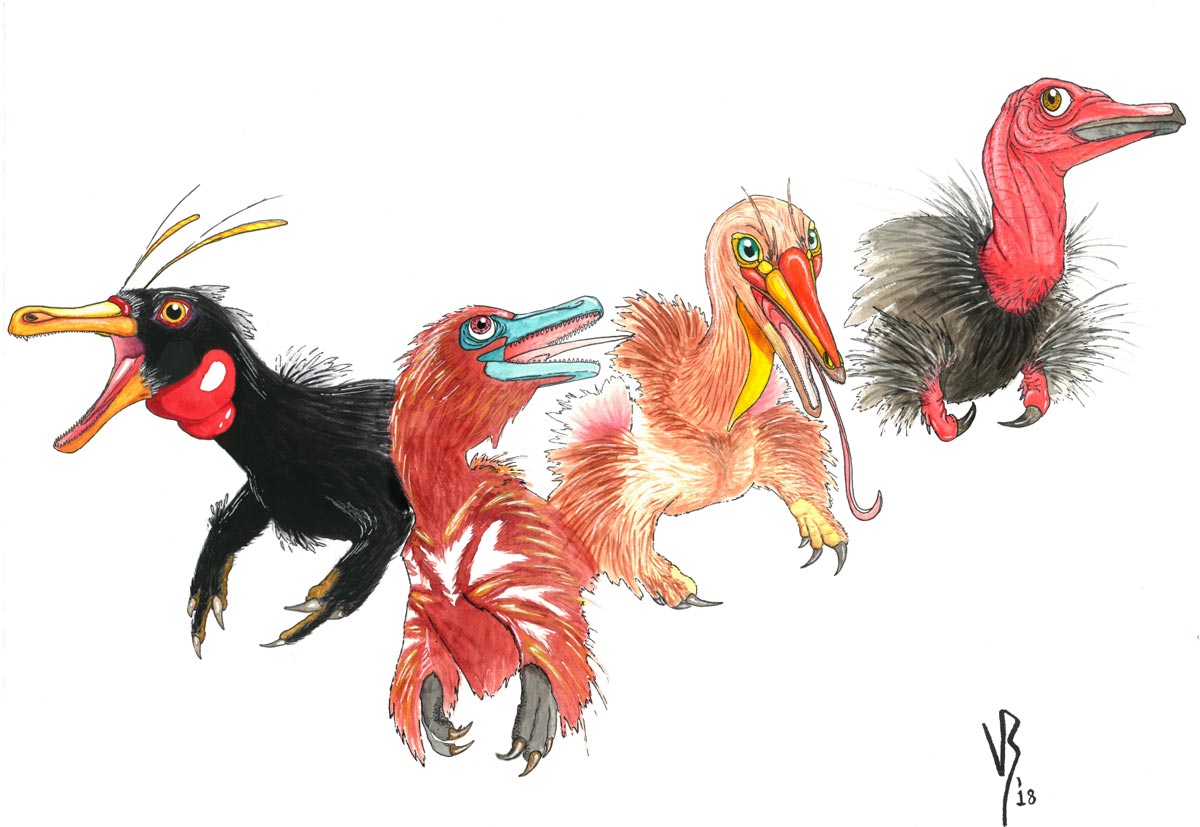
Co-lead authors Jonah Choiniere (L) and Xu Xing (R) working on an alvarezsaur skull at the Institute of Vertebrate Paleontology and Paleoanthropology, Beijing, China. Photo credit: Jonah Choiniere
Two newly discovered dinosaurs provide important insight into the evolution of Alvarezsauroidea in the Early Cretaceous period, according to a new study by an international team of researchers, including a University of Alberta paleontologist.
The two species, called Xiyunykus and Bannykus, belong to the theropods, a bipedal, largely carnivorous dinosaur lineage. Some theropods eventually gave rise to birds, while another branch, the alvarezsauroids, evolved into strange-looking insectivores with short arms and hands with an enlarged finger for digging into nests. However, until now, little was understood about how this change occurred because a vast evolutionary gap separated the advanced insectivorous alvarezsauroids from the earliest known member of the group, Haplocheirus..
"The significance of Xiyunykus and Bannykus is that they fall within that gap, and shed light on patterns of evolution within Alvarezsauroidea," explains Corwin Sullivan, associate professor in the Department of Biological Sciences and co-author on the study.
"These specimens greatly improve the scientific community's understanding of the early stages of alvarezsauroid evolution, and give us a better idea of what early alvarezsauroids were like."
The new specimens illustrate the transition in eating habits from carnivory to insectivory in alvarezsauroids. The forelimbs of the new species show some adaptations for digging, which would later become more exaggerated, and their skulls also resemble those of insectivorous alvarezsauroids in some features. The hindlimbs are less modified, suggesting that the arms and head of alvarezsauroids underwent significant change before the legs did.
There's still a lot to learn about the early evolution of alvarezsauroids," added Sullivan, who is also the curator of the Philip J. Currie Dinosaur Museum. "Xiyunykus and Bannykus are currently represented by one incomplete specimen apiece. Those specimens provide a good deal of intriguing information, but we'll need many more fossils before we can be confident that we have a clear understanding of how alvarezsauroids, to put it bluntly, got so weird."
The paper, "Two Early Cretaceous fossils document transitional stages in alvarezsaurian dinosaur evolution," was published in Current Biology (doi: 10.1016/j.cub.2018.07.057).
